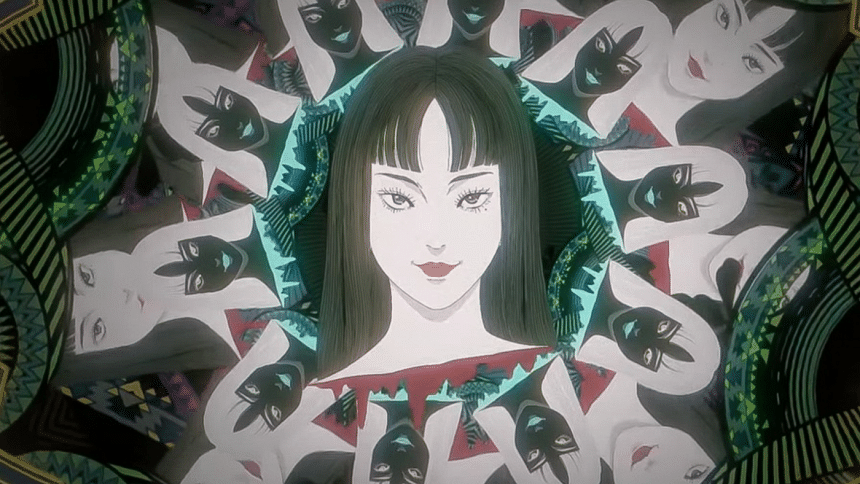Maniac: Japanese Tales of the Macabre is yet another underwhelming Junji Ito adaptation

For over two decades, Junji Ito has been widely recognised and lauded as the premier icon for modern-day Japanese horror. Through stories like Uzumaki and Retina, he explores suffocatingly bleak, and at times, eerily mundane, themes like cosmic horror, obsession, self-harm, etc. His penchant for combining these surreal tales with macabre and grotesque imagery has earned him a sizeable cult following and worldwide fame.
Naturally, as his career saw an upward trajectory, many of his short stories were adapted into live-action films, series, and miniature anime episodes. While the merits of each instalment are highly debatable, they all share a common thread in failing to reproduce the same harrowing experiences found in their source material.
Netflix's newest adaptation, Junji Ito Maniac: Japanese Tales of the Macabre, suffers a similar fate, boiling down to yet another adaptation that didn't quite hit the mark.
Animated by Studio DEEN, Maniac is essentially an anthology that condenses 20 of Ito's lesser-known works into a total of 12 episodes. Promising stories such as The Strange Hikizuri Siblings, The Hanging Balloons, etc. make their way to the small screen, and deservedly so. However, by the time the end credits roll around, hardly any of the stories feel memorable or well-made to any extent.
The show's biggest caveat is that some of the stories were originally part of a bigger tale, which meant that massive portions had to be cut off to fit into the adaptation. Tomie: Photo, for instance, was excerpted from Ito's incredibly popular manga series, Tomie. While it could potentially be one of the most captivating episodes, the rushed adaptation left many narrative holes and gaps in exposition which took away from the final viewing experience.
In addition, most episodes contain two stories in the span of only 20 odd minutes, so conflicts and build-ups either go nowhere or end abruptly without a hint of closure.
Another major shortcoming that pulled Maniac's success down was Studio DEEN's slapdash approach to the show's visuals, which happens to be Ito's most revered feature.
Ito constructs his world in a way that is meant to be nauseating yet alluring in some twisted way. After all, his brand of terror aims to disturb, not frighten, the viewers via highly-detailed drawings that utilise shadows and morbid imagery to breathe life into the monsters he makes.
The anime, on the other hand, pales in comparison.
Stiff and flat movement makes even the simplest and most mundane shots seem uninspired and clumsy. The horror aspect of the show is significantly watered down as well since the animated sequences come off as janky instead of unsettling.
But besides the glaring flaws, credit must be given where it's due. Maniac managed to stay loyal to Ito's signature art style while implementing a sombre colour palette that fit the mood of each episode quite nicely. The voice actors also pulled out all the stops to personalise their characters and fit into their roles organically.
Lastly, stories that were allocated entire episodes were able to showcase their ingenious themes. Tomb Town from episode seven and Ice Cream Bus from the second episode had their moments in the spotlight, albeit for a brief period.
It's a shame that Tales of the Macabre had to unravel the way it did because a mangaka of Ito's calibre deserves far better treatment. One can only hope that the adaptation of Uzumaki, arguably his best work to date, will do justice to the maestro.
Ayaan immerses himself in dinosaur comics and poorly-written manga. Recommend your least favourite reads at [email protected]

 For all latest news, follow The Daily Star's Google News channel.
For all latest news, follow The Daily Star's Google News channel. 








Comments